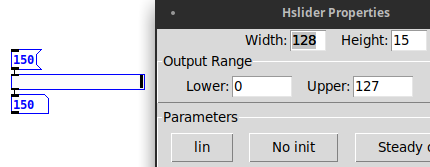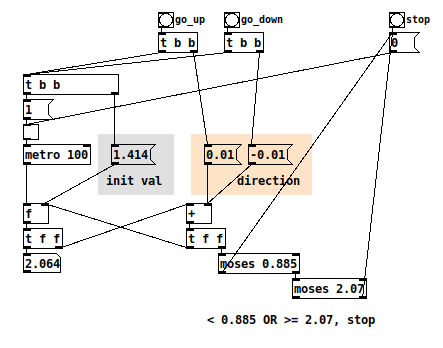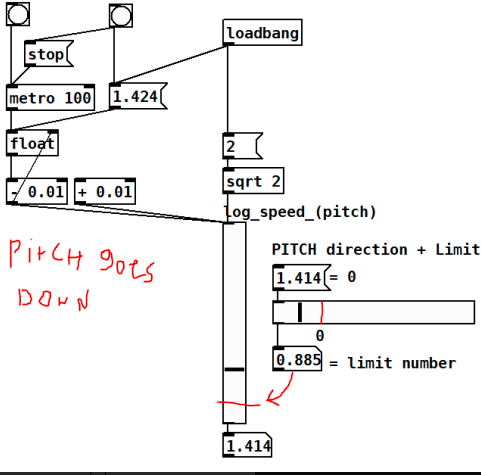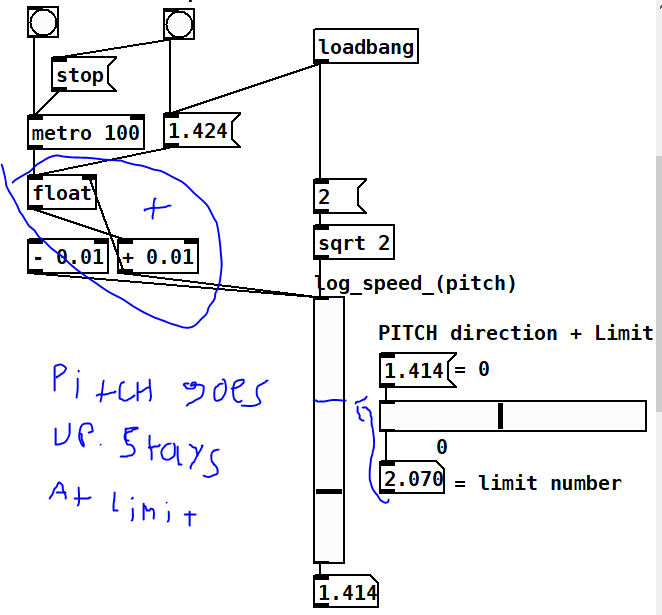Obineg says: "and while GUI objects might be able to understand a message to set new min and max values, it is not good practice to use this feature to perform math operations"
I'd absolutely agree with this. Program logic should be program logic. GUIs should be for input or display. GUIs should not be performing program logic!
For that matter, sliders' min/max limits don't apply to values coming in:

The slider has set a limit max = 127. I sent in the number 150, and the slider sent out the number... 150. Not clipped to 127.
So you cannot use the GUI to enforce numeric limits at all. That is, the title of this thread is already leading in the wrong direction. A slider having a limit is irrelevant to what you're trying to do.
It seems like you're looking for an increment/decrement behavior that stops once it reaches a certain value (and then maybe triggers a different increment/decrement -- though this is unclear in your description because you say both "and change direction" and "once it hits the limit stays at that value until I press stop").
So, first, increment and decrement. You have the right idea with the float box. You don't need both a [+] and a [-] box because you can set the second operand: you can [+ 0.01] or [+ -0.01] using the same object.
Then, you need something that will decide whether the number is in range or out of range, i.e., you need numeric comparisons. I like [moses] for this but you could also use [>], [<] if you wanted.
So the way I would design "increment or decrement, and stop when the value goes out of range" might be like this.

Both buttons set the same initial value and start the metronome. The third outlet of the [t b b b] objects sets the up or down direction. Remember [t] outputs right to left, so the order is: 1/ set direction, 2/ set counter initial value, 3/ run the [metro].
At the top right is the "stop" signal (triggered by a too-low or too-high value). If you wanted to trigger some other action, you could put that here.
hjh
PS (edit) Actually the initializer could have slightly fewer crossing wires by splitting the [t] objects:








